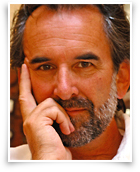
Richard Harvey
connecting psychotherapy and spiritual growth for human awakening
Being Still
Spiritual practice is a being-orientated practice. It is unlike any other kind of practice, because it is aimed in the opposite direction. Most other kinds of practices are outward; they are achievement, performance, and attainment orientated. We accrue more, add to ourselves, become more skilful, more adept, more masterful, more polished and accomplished. Through progress, study, and persistence we can refine our expertise and gain a position, status, and prestige. Real spiritual practice is just the opposite. It is a process of letting go and loss, shedding and detaching, peeling back the layers until all that remains is the bright and shining light of the heart of consciousness and awareness. True happiness has no form and no attachments with which to confine or limit it and neither does spiritual attainment. Spiritual attainment is rather a reveling in loss, perfect surrender, and, in time, emptiness.
Modern humans are confused about their two primary modes of experience – doing and being. These two conditions are arguably the twin poles, the dual content of human experience. Either we are doing or we are being. It’s hard to do and be, isn’t it? It’s as if we can only do one or the other. When we are being, what happens to our doing? When we are doing, what happens to our being? The key to the conundrum of doing and being is simple. Being precedes doing, naturally. In our unnatural world culture however, which is based on thought (and thinking is a mode of doing), doing comes before being, because it is valued more. So, when the drive to attain spirituality emerges, the approach will be inevitably aligned with this order and doing will come first, resulting in the journey-adventure-questing model.
However, when doing is considered more important than being, it is like removing the hub of a wheel and leaving only spokes, merely scattered purposeless pieces. When the sacred is rejected in this way, mental illness rises, neurotic behavior is considered normal, and people are unable to prioritize or be intimate with one another. When the sacred is ignored, doubtful value systems become commonplace due to the lack of wise guidance and understanding. In any case, the inner world, the heart, emotions, and the sense of personal power are devalued, resulting in a diminishing of our innate humanity.
For the sacred to be restored to the modern world we need to learn to be again by practicing being, meditation, and attending to our inner life. To be where you are now, simply be aware, be present and be free of assumptions, expectations, prejudice, judgments, criticisms, and ideas.
The great wisdom and sanity of sitting still in grace and contentment, without seeking, represents and expresses the innate condition of a human being, the ultimate expression of insight and understanding. Because it is entirely free of attachments, this equanimous image is the closest we can find to the heart itself and to inner serenity. The still body of the human being sitting in balance, compassionately absorbed and intending love and contentment to all is a worthy image for inner realization and the enlightened state. The central feature is the absorption in the Self or the Divine. Being still, ceasing from excessive psycho-physical tension, compulsive action, and restlessness of heart and spirit returns us to our eternal nature – instantly.
Seeing a Theravadin monk one day was my passport to inner peace. This is yet another example of the laws of the inner world being inverse to the laws of the outer. The Theravadin holy man did not instill anything into me or educate or demonstrate anything to me that was not already fully contained inside me. The sighting of the monk was the sign that I was inwardly prepared to reveal this aspect of being to myself. This kind of education is a drawing out, not a putting in.
Actually, my experiences were many. My first spiritual teacher leading a young boy mindfully, tenderly, and incredibly gently around the flower-bordered walkways of a beautiful park; the gasho and aware eyes of a guru as he took in and communicated wordlessly to his devotees; the sacred stillness that was so powerful that it precluded anticipation at the beginning of so many personal growth groups with my therapist and others; the sight of an aware devotee mindfully preparing food; a Zen monk softly padding to the altar in his stockinged feet at the closing ceremony in the zendo. All these blessed, precious visions of great peace and stillness, profound in their inner contentment, resounding with truth, and bright with veracity, reflected a reality beyond life and death.
Through your awareness practice, you connect with inner stillness and with this stillness, your sensitivity to the spiritual arises. You cannot make extraordinary experiences happen, but you can make yourself available to them by refining and sensitizing yourself through openness and receptivity. Practice meeting experience as it is. Engage with the outer world through your experience of the senses. Bypass judgment, criticism, and assumptions by being simply aware… and cultivate a sense of wonder.
This article is an excerpt from Richard Harvey’s book Your Divine Opportunity.
Share this article
This article was published on this site in April 2024.